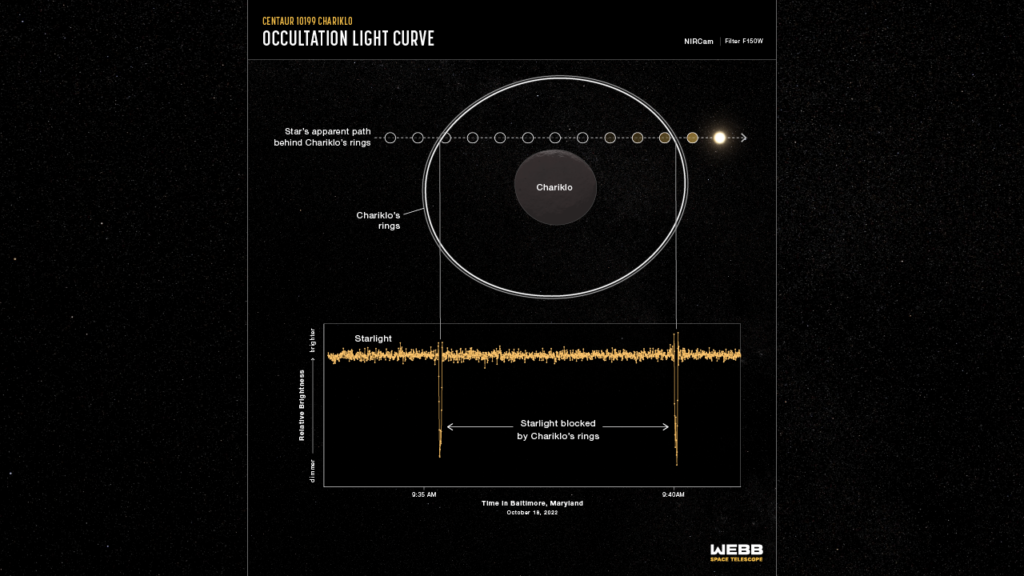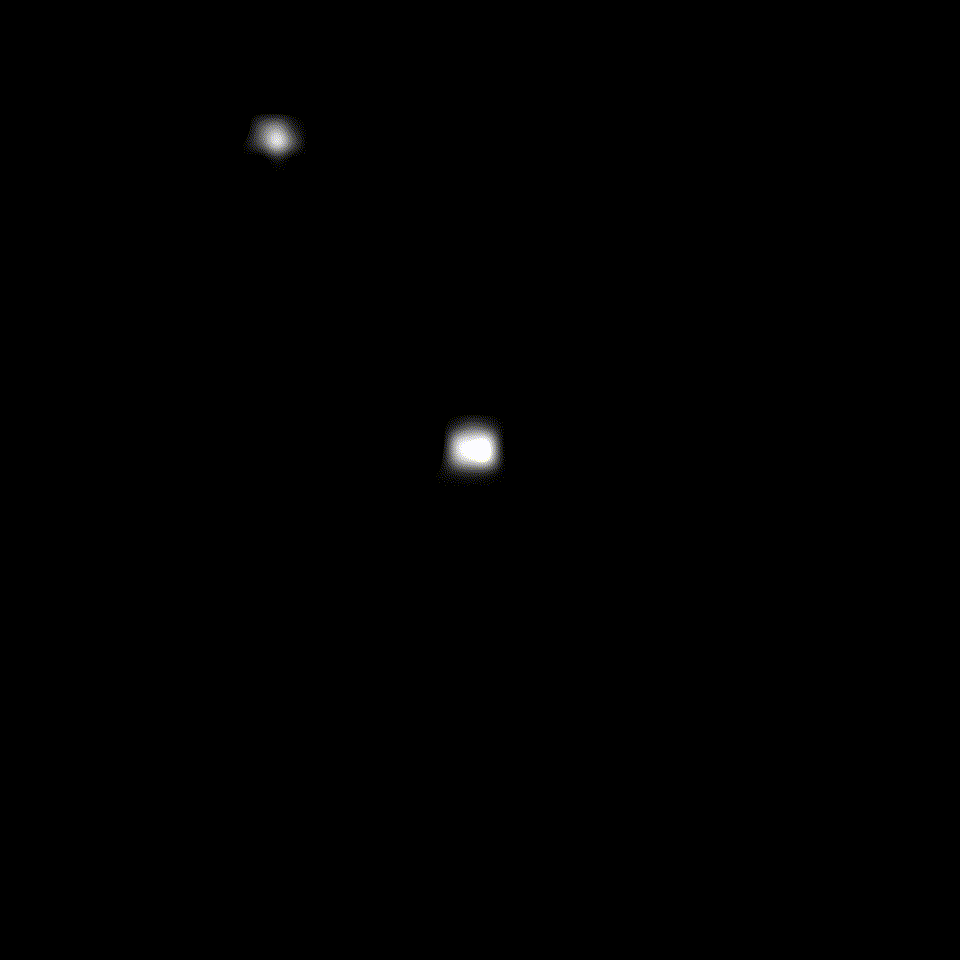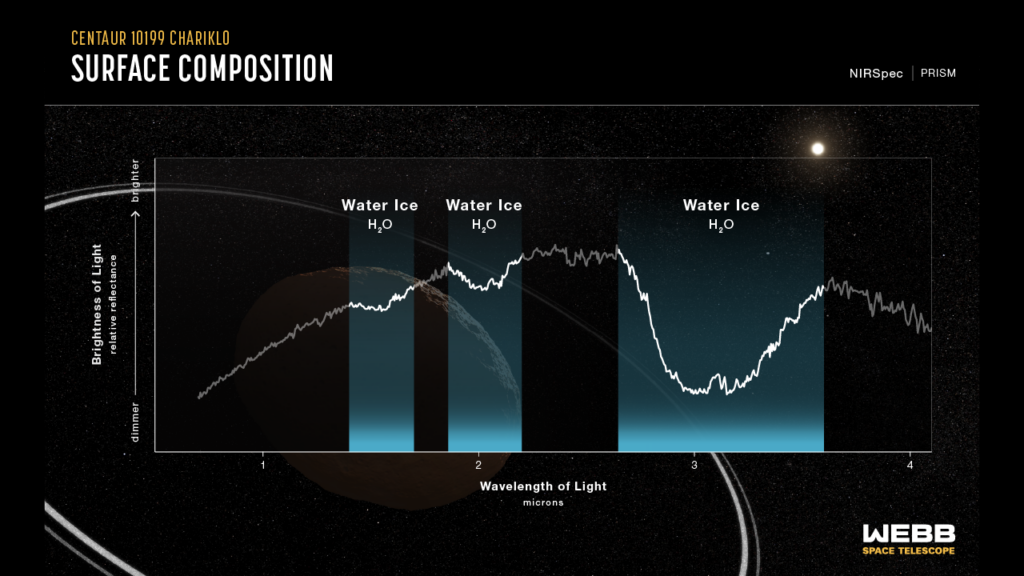Astronomers used the James Webb Telescope (JWST) to study the rings of the centaur asteroid Chariklo. The data collected during the observations helped to clarify their characteristics and composition.
Centaur asteroid with rings
Chariklo is classified as a centaur. This is the name of a group of bodies which orbits lie between the orbits of Jupiter and Neptune. By their properties, they occupy a transitional position between asteroids and comets.

The diameter of the Chariklo is approximately 260 km. To date, it is the largest of the known centaurs. During the Chariklo coverage of a distant background star in 2013, astronomers made an amazing discovery. It turns out that the object is surrounded by two rings. Presumably, they were formed as a result of a collision of a Chariklo with another object.
Observations of Chariklo rings
In October 2022, Chariklo again covered the star. Astronomers used this rare opportunity to study its ring system in more detail. For this, they used JWST. The observations of Chariklo were the first time that a space observatory saw the covering of a star.

The coverage took place on October 18, 2022. JWST monitored it with a NIRCam camera and a NIRSpec spectrograph. During the subsequent analysis of the data, astronomers were able to clarify the characteristics of the ring system of Chariklo. The width of the first ring is 6-7 km, and the second is 2-4 km, they are separated by an interval of 9 km.

JWST also managed to obtain spectra of rings and Chariklo surfaces. It turns out that they have differences from each other. The spectra of the rings showed the presence of crystalline water ice. According to scientists, this suggests that they consist of a mixture of ice particles and dark matter left after the impactor that gave birth to them.
Earlier we wrote about how JWST looked inside future exoplanets.
According to https://blogs.nasa.gov
Follow us on Twitter to get the most interesting space news in time
https://twitter.com/ust_magazine

